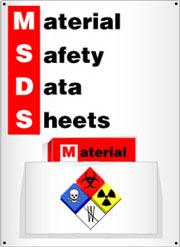|
Denatonium Benzoate
CAS number [3734-33-6]
![Denatonium Benzoate CAS number [3734-33-6]](http://www.tajapi.com/api%20images1/image001.gif) Denatonium
Benzoate is the leading bitterant safety additive for household,
automotive and garden products worldwide. Consumers recognize Bitrex for
its added safety as a taste aversive. The Bitrex Trademark Program is
valued by manufacturers for its marketing, technical and regulatory
support services. Marketers and retailers recognize the simple concept:
"safety sells." Denatonium
Benzoate is the leading bitterant safety additive for household,
automotive and garden products worldwide. Consumers recognize Bitrex for
its added safety as a taste aversive. The Bitrex Trademark Program is
valued by manufacturers for its marketing, technical and regulatory
support services. Marketers and retailers recognize the simple concept:
"safety sells."
He bitterness of the compound guides most applications of denatonium.
Denatonium benzoate is used to denature ethanol so that it is not taxed
as an alcoholic beverage. One designation in particular, SD-40B,
indicates that ethanol has been denatured using denatonium benzoate. The
common name for this chemical, denatonium, alludes to this application.
Denatonium also discourages consumption of harmful alcohols like methyl
alcohol and ethylene glycol. Denatonium is also used in rubbing alcohol
as an inactive ingredient. It is also added to all kinds of harmful
liquids including solvents, paints, varnishes, toiletries, and other
household products. Denatonium is a quaternary ammonium cation. It is a
compound of a salt with an inert anion like benzoate or saccharide. The
structure of denatonium is related to the local anesthetic lidocaine,
differing only by the addition of a benzyl group to the amino nitrogen.
General
Synonyms: benzyl diethyl
((2,6-xylylcarbamoyl)methyl) ammonium benzoate
Use: animal and bird repellent
Molecular formula: C21H29N2O . C7H5O2
CAS No: 3734-33-6
EINECS No: 223-095-2
Physical data
Appearance: white crystals
Melting point: 166 - 170 C
Boiling point:
Vapour density:
Vapour pressure:
Density (g cm-3):
Flash point:
Explosion limits:
Autoignition temperature:
Water solubility: soluble
Stability
Toxicology
Toxic by ingestion. Skin, eye and
respiratory irritant. May be harmful by inhalation or if absorbed
through skin.
Toxicity data
(The meaning of any toxicological abbreviations which appear in
this section is given
here.)
ORL-RAT LD50 584 mg kg-1
ORL-RBT LD50 508 mg kg-1
Risk phrases
(The meaning of any risk phrases which appear in this section is given
here.)
R25 R36 R37 R38.
Transport information
Personal protection
Safety glasses, adequate ventilation.
Safety phrases
(The meaning of any safety phrases which appear in this section is
given here.)
S2 S13 S24 S36 S46.
|
|
Note /Government
Notification: These chemicals are designated as those that are used
in the manufacture of the controlled substances and are important to
the manufacture of the substances. For any (Control Substance)
products Import and Export *** subjected to your country government
laws /control substance ACT.
Information: The information on this web page is provided to help
you to work safely, but it is intended to be an overview of hazards,
not a replacement for a full Material Safety Data Sheet (MSDS). MSDS
forms can be downloaded from the web sites of many chemical
suppliers. ,also that the information on the PTCL Safety web site,
where this page was hosted, has been copied onto many other sites,
often without permission. If you have any doubts about the veracity
of the information that you are viewing, or have any queries, please
check the URL that your web browser displays for this page. If the
URL begins "www.tajapi.com/www/Denatonium Benzoate.htm/" the page is
maintained by the Safety Officer in Physical Chemistry at Oxford
University. If not, this page is a copy made by some other person
and we have no responsibility for it.
The Controlled Substances Act (CSA) was enacted into law by the
Congress of the United States as Title II of the Comprehensive Drug
Abuse Prevention and Control Act of 1970.[1] The CSA is the federal
U.S. drug policy under which the manufacture, importation,
possession, use and distribution of certain substances is regulated.
The Act also served as the national implementing legislation for the
Single Convention on Narcotic Drugs |
|
|
|



![Denatonium Benzoate CAS number [3734-33-6]](http://www.tajapi.com/api%20images1/image001.gif) Denatonium
Benzoate is the leading bitterant safety additive for household,
automotive and garden products worldwide. Consumers recognize Bitrex for
its added safety as a taste aversive. The Bitrex Trademark Program is
valued by manufacturers for its marketing, technical and regulatory
support services. Marketers and retailers recognize the simple concept:
"safety sells."
Denatonium
Benzoate is the leading bitterant safety additive for household,
automotive and garden products worldwide. Consumers recognize Bitrex for
its added safety as a taste aversive. The Bitrex Trademark Program is
valued by manufacturers for its marketing, technical and regulatory
support services. Marketers and retailers recognize the simple concept:
"safety sells."



